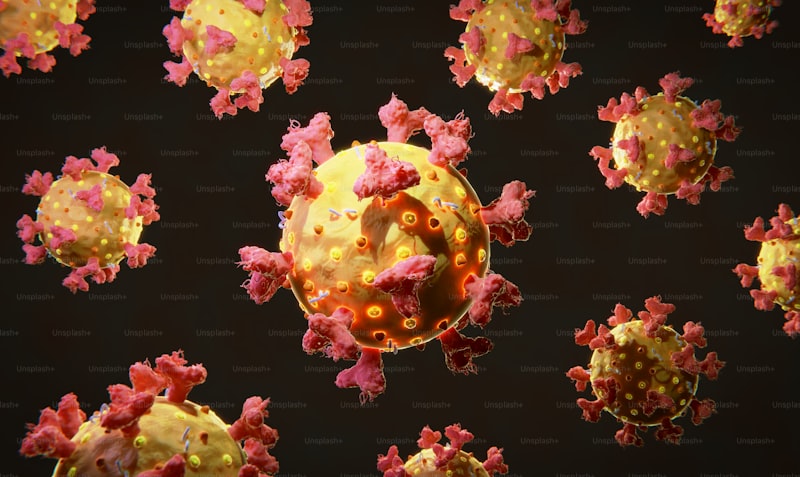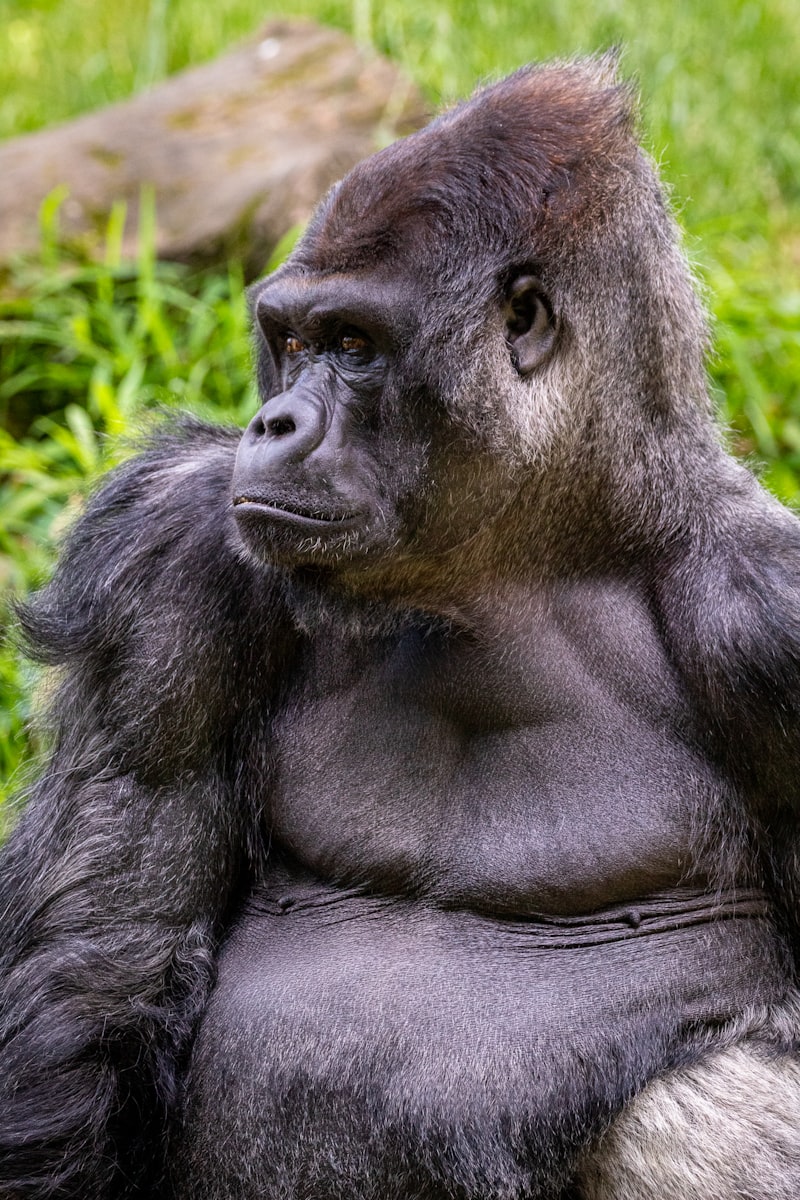The immune systems of mammals are marvels of biological defense, finely tuned to protect the body from harmful invaders. Unlike plants or simpler organisms, mammals have complex immune systems that adapt and evolve to combat a wide range of threats, from viruses and bacteria to parasites and even cancerous cells.
At the heart of this defense network are white blood cells, the soldiers of the immune system. These cells come in various types, each with specific roles in recognizing and neutralizing threats. For instance, macrophages act as the body’s first line of defense, engulfing and digesting foreign particles. Meanwhile, T cells orchestrate targeted attacks on infected cells and coordinate immune responses.
Antibodies, produced by B cells, are another crucial component. These Y-shaped proteins lock onto specific antigens, marking them for destruction by other immune cells. This targeted approach allows the immune system to efficiently clear infections and remember past threats, providing immunity against future encounters with the same pathogens.
But the immune system’s effectiveness isn’t just about brute force—it’s also about precision and memory. Memory cells, a type of long-lived lymphocyte, retain information about previous infections. This memory enables a faster and stronger response upon subsequent exposure to the same pathogen, leading to quicker recovery times and often preventing illness altogether.
Interestingly, the immune systems of mammals exhibit remarkable diversity. Different species have evolved unique adaptations tailored to their environments and lifestyles. For example, marine mammals like seals and whales have immune systems adapted to withstand the challenges of oceanic pathogens, while terrestrial mammals face different sets of challenges.
The immune systems of mammals are intricate systems evolved over millions of years to protect against an ever-changing array of threats. By combining precision, memory, and adaptability, these systems ensure the survival and health of individuals and entire species. Understanding how these systems work not only enhances our knowledge of biology but also informs medical research and the development of new treatments and vaccines.
Unveiling the Secrets: How Mammals’ Immune Systems Evolved Over Millennia
Have you ever wondered how mammals’ immune systems developed and adapted through millennia of evolution? The journey of our immune systems is a tale of survival and adaptation, finely tuned over millions of years to protect us from pathogens and diseases.
At its core, the evolution of mammalian immune systems is a testament to nature’s incredible ability to innovate and refine. From early ancestors to modern species, each adaptation has been a response to the ever-changing landscape of microbial threats.
Millions of years ago, as mammals emerged, so too did the need for a more sophisticated defense mechanism. The innate immune system, our first line of defense, evolved to recognize and respond rapidly to a wide array of pathogens. This system, conserved across many species, provides immediate protection upon encountering a threat.
However, the real marvel lies in the adaptive immune system, a more recent evolutionary innovation. This system, characterized by its ability to remember and specifically target previously encountered pathogens, marks a significant advancement in mammalian defense strategies. Through the process of natural selection, mammals developed diverse immune cell types and mechanisms that allow for tailored responses to different infections.
Analogous to a constantly evolving army, our immune systems employ various strategies akin to soldiers with specialized roles. Antibodies act as targeted missiles, while T-cells coordinate and execute precise attacks against intruders.
The evolution of mammals’ immune systems is not merely a biological phenomenon but a saga of resilience and ingenuity. From ancient ancestors navigating primordial environments to modern-day species combating global health challenges, each adaptation reflects the intricate dance between organisms and their environments.
Beyond Basics: Exploring the Diversity of Immune Responses in Mammals
Ever wondered how mammals defend themselves against a myriad of threats? The immune system, beyond its basics, reveals a fascinating diversity in how different species tackle invaders. From the armored pangolin to the agile cheetah, each mammal has evolved unique immune strategies that keep them thriving in their habitats.
Take the pangolin, known for its formidable scales as well as its immune prowess. Its immune system not only protects against physical threats but also adapts to fight off pathogens that may evade other defenses. Similarly, the cheetah, built for speed, boasts an immune response finely tuned to support its high-energy lifestyle. These adaptations showcase nature’s ingenuity in equipping mammals with tools tailored to their environments.
But it’s not just about survival; diversity in immune responses also underscores the interconnectedness of species in ecosystems. Bats, for instance, exhibit a remarkable resilience to viruses that can be deadly to other animals, shedding light on potential solutions for human health challenges.
Beyond the biological marvels, understanding these immune variations offers insights into medical research. Scientists study these adaptations to develop novel therapies and vaccines, inspired by nature’s own solutions to combating diseases.
Intriguingly, each discovery about immune diversity sparks new questions. How do mammals maintain this balance between defense and tolerance? What lessons can we apply to improve human health outcomes? Exploring these questions not only deepens our understanding of mammalian biology but also opens doors to innovative approaches in medicine.
This article aims to captivate readers with the fascinating diversity of mammalian immune responses while maintaining a conversational tone and incorporating SEO best practices.
From Bears to Bats: Comparative Analysis of Mammalian Immune Systems
When it comes to the immune systems of mammals, each species has evolved unique strategies to combat pathogens and maintain health. Take bears, for instance. These majestic creatures hibernate through harsh winters, surviving on stored fat reserves without eating or drinking. During hibernation, their immune systems undergo fascinating adaptations. They suppress inflammation and reduce metabolic activity to conserve energy, which helps them endure months of fasting in a dormant state.
In contrast, bats are known for their extraordinary resilience to viruses, despite being carriers of many pathogens. Their immune systems have developed intricate mechanisms to tolerate viral infections without falling ill themselves. This unique ability has intrigued scientists studying zoonotic diseases, as bats can host viruses like Ebola and SARS-CoV-2 without showing symptoms. Understanding these mechanisms could provide crucial insights into preventing future pandemics.
What about humans? Our immune systems rely heavily on adaptive immunity, where T cells and B cells memorize specific pathogens to mount targeted responses upon reinfection. This sophisticated defense mechanism allows us to develop immunity through vaccines and previous infections, enhancing our ability to fight diseases over time.
Comparing these diverse immune strategies across mammals reveals both commonalities and unique adaptations. While bears adapt their immune responses to survive extreme conditions, bats manage to coexist with viruses that are deadly to other species. Humans, with our adaptive immune memory, have developed vaccines and treatments that leverage our understanding of these evolutionary marvels.
As researchers delve deeper into the immunology of different mammalian species, they uncover new possibilities for medical advancements and disease prevention. By studying the varied immune responses from bears to bats, scientists hope to unlock nature’s secrets for the benefit of all species.
The Role of Gut Microbiota in Strengthening Mammals’ Immunity

Imagine your gut as a bustling ecosystem, teeming with trillions of microbes—bacteria, viruses, fungi—living harmoniously. This vibrant community, known as gut microbiota, isn’t just a passive bystander; it’s an active player in maintaining your health, especially when it comes to immunity.
Here’s the deal: these gut microbes aren’t freeloaders; they earn their keep by helping us digest food, produce vitamins, and crucially, regulate our immune responses. Think of them as your personal bodyguards, constantly patrolling and ensuring everything runs smoothly.
One of their standout roles is training our immune system from a young age. Like mentors guiding rookies, gut microbes expose our immune cells to harmless bacteria early on. This exposure acts like a boot camp for our immune cells, teaching them to differentiate between friend and foe. It’s like giving them a practice round so they’re ready when the real battle begins.
But that’s not all. Gut microbiota also produce compounds like short-chain fatty acids (SCFAs) that act as messengers, signaling our immune cells to stay alert or stand down. It’s a bit like sending out alerts in a city—keeping everyone informed and prepared for any situation.

Interestingly, a balanced and diverse gut microbiota is crucial for this immune-boosting job. When this community is thrown out of whack—due to poor diet, stress, or antibiotics—it can disrupt our immune system’s harmony. Imagine a team of musicians out of sync; the performance suffers, and so does our immunity.
Scientists are delving deeper into this intricate relationship, uncovering how specific microbes can enhance immunity against infections, allergies, and even autoimmune diseases. It’s a bit like uncovering hidden superpowers within us—microscopic allies that we never knew existed.
Adaptive vs. Innate: Understanding the Dual Nature of Mammals’ Immune Defenses
Let’s start with innate immunity, often considered the frontline defense. This system is like the body’s rapid-response team, immediately mobilizing upon encountering any foreign invader. It’s non-specific, meaning it doesn’t differentiate between various threats but instead attacks anything unfamiliar, like a vigilant sentry on duty. Think of it as the body’s initial security detail, primed to react swiftly to any signs of trouble.
On the other hand, adaptive immunity is more akin to a specialized task force. Unlike innate immunity, this system is highly specific and takes time to develop. It learns and adapts over time, recognizing specific pathogens it has encountered before and mounting a precise response tailored to eliminate them effectively. This is why adaptive immunity provides long-term protection, often resulting in immunity to specific diseases after initial exposure or vaccination.
To illustrate, innate immunity is like the walls and gates of a castle, always on guard and ready to repel invaders at a moment’s notice. Meanwhile, adaptive immunity acts like a meticulous intelligence agency, gathering information on past intruders to devise strategic responses against future threats.
Together, these dual immune systems form a formidable defense network, each playing a crucial role in maintaining the body’s health and resilience against a wide array of pathogens. Understanding their complementary functions sheds light on how our bodies combat diseases and adapt to new challenges, ensuring robust protection throughout our lives.
Breaking Boundaries: How Mammals’ Immune Systems Adapt to Changing Environments
Imagine a world where every change in the environment triggers a symphony of responses within our bodies. From the microscopic level of cells to the complex interactions of organs, our immune systems are built to detect and respond to threats, ensuring our survival in diverse habitats.
When mammals encounter new environments, whether due to migration, climate change, or habitat alteration, their immune systems undergo remarkable transformations. It’s like a finely tuned orchestra adapting its melody to match the mood of a changing landscape. Cells communicate through intricate chemical signals, orchestrating an immune response tailored to the specific challenges presented by the new environment.
For instance, when a mammal moves to a colder region, where pathogens thrive in different conditions, its immune system adjusts by producing more specialized antibodies or enhancing the activity of immune cells like macrophages and T-cells. This adaptation ensures that the body can fend off infections effectively in the face of new microbial challenges.
Similarly, in environments with higher exposure to allergens or toxins, mammals’ immune systems may develop heightened sensitivity or tolerance mechanisms to cope with these new environmental stressors. It’s akin to learning to navigate a crowded city: at first overwhelming, but gradually becoming familiar and manageable through adaptation.
Frequently Asked Questions
How does the mammalian immune system protect against diseases?
Learn how the mammalian immune system defends against diseases, including pathogens and foreign substances, through mechanisms like antibodies, T cells, and phagocytes.
How does vaccination boost immunity in mammals?
Learn how vaccination enhances immunity in mammals. Vaccines introduce harmless parts of pathogens to trigger an immune response, helping the body recognize and fight future infections more effectively. This process primes the immune system to mount a faster and stronger defense, crucial for preventing diseases.
What is the immune system of mammals and how does it work?
Learn about the immune system of mammals, its function, and how it protects against pathogens. Understand the roles of white blood cells, antibodies, and the immune response in defending the body.
How does stress affect the immune system of mammals?
Learn how stress impacts the immune systems of mammals, affecting their ability to fight off infections and maintain overall health. Discover the mechanisms through which stress hormones influence immune responses and strategies to mitigate these effects.
What are the main components of a mammal’s immune system?
The mammalian immune system primarily consists of white blood cells, antibodies, the lymphatic system, and various organs such as the spleen and thymus. These components work together to identify and neutralize pathogens, ensuring the body’s defense against infections and diseases.


